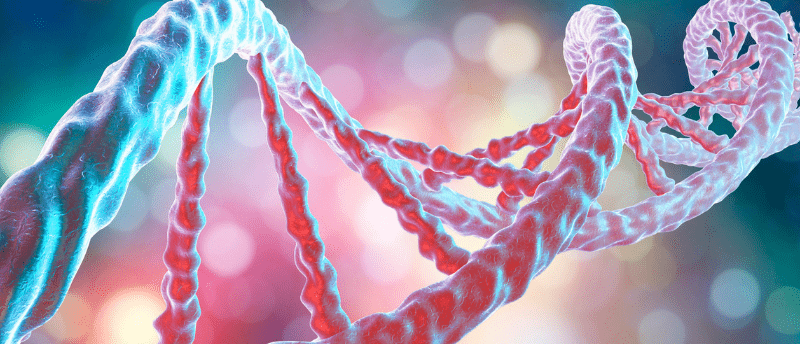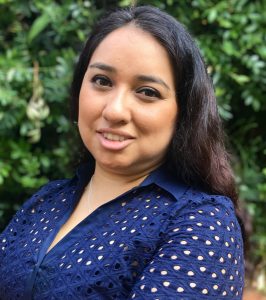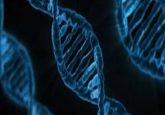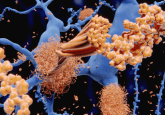Identifying the molecular cause of rare genetic disorders

 Claudia Gonzaga-Jauregui studies molecular diagnostics of rare genetic disorders using genome sequencing and family-based analyses to better understand variants that cause disease. Gonzaga-Jauregui is a researcher at the International Laboratory for Human Genome Research at the National Autonomous University of Mexico (LIIGH, UNAM; Juriquilla, Mexico), where her research group studies several aspects of genetic disease, including the molecular causes and the economic and social impact on individuals.
Claudia Gonzaga-Jauregui studies molecular diagnostics of rare genetic disorders using genome sequencing and family-based analyses to better understand variants that cause disease. Gonzaga-Jauregui is a researcher at the International Laboratory for Human Genome Research at the National Autonomous University of Mexico (LIIGH, UNAM; Juriquilla, Mexico), where her research group studies several aspects of genetic disease, including the molecular causes and the economic and social impact on individuals.
Our Assistant Editor, Aisha Al-Janabi, found out more about Gonzaga-Jauregui’s research, the challenges caused by the underrepresentation of different populations in genomic databases, and the responsibility of carrying out genetics studies with human participants.
What is the focus of your research?
We focus on finding the molecular causes of rare genetic disorders. We mostly use exome and whole-genome sequencing to identify variants that may be associated with a particular disease. We try to find the molecular diagnosis for patients with or without a clear clinical diagnosis.
What are the challenges of studying genomic variations?
Interpreting function variation is generally straightforward. Here, the variant causes a stop codon early on in the sequence or a frameshift mutation, which we know is likely to cause a loss of that copy of the gene. However, there are some variants that we don’t know how to interpret. For example, missense variants (a genetic alteration where a single base pair is substituted, altering the genetic code, and producing a different amino acid) can be a bit more complicated to interpret because they can have different effects. Missense variants can cause reduced or gained function, among other changes, that can cause diseases.
As Latin American and Hispanic populations are underrepresented in genomic databases, this adds an extra challenge because there might be variants that are not pathogenic but are polymorphic instead and are present in many people. As these populations are lacking in genomic databases, these variants haven’t been characterized so we don’t necessarily know if they are pathogenic or polymorphic. This increases the challenge of interpreting genomic variations in patients because they might actually be benign variations in the population.
I saw you recently published a paper on using community engagement to address this underrepresentation in genomic data. Could you tell me more about this?
I think, in general, the human genetics and genomics community is trying to shift its approach in studies with human subjects to see them as participants. This means engaging them in these genomic projects as people that can benefit and should benefit from knowing their genetic information. We have a responsibility as we often find actionable variants, which are medically actionable and can be treated to decrease morbidity and mortality if there is a known intervention. In some projects, participants are treated as donors of DNA samples rather than actual people participating in the project. The idea is to move towards a model of engaging participants but also engaging communities.
As I mentioned, we have Hispanic and Latin American populations, as well as many other populations, that are underrepresented in databases. Unfortunately, a lot of these populations, because of historical, socio-economic and geographic issues, are also marginalized populations. The majority of the variations in databases come from projects that were done with individuals of European ancestry.
As we recognize this lack of diversity in genomics and try to increase the diversity of genomics datasets, we also have to be mindful when we go to engage participants and communities. We need to make sure that we are respectful in terms of their ideology, and sometimes cosmology, which is especially important for Native American tribes and groups. We need to respect participants and make sure they receive some benefits in terms of genetic counseling or return of results following their participation in genomics projects.
What techniques do you use in your research?
I started as a PhD student at Baylor College of Medicine (TX, USA), and at the time we were the first group that looked at whole-genome sequencing to identify the cause of genetic disorders and provide a molecular diagnosis. That opened up the field of medical and clinical genomics and the application of exome sequencing and genome sequencing for the diagnosis of rare genetic diseases.
We mostly use exome sequencing, because it is still more cost effective and more scalable than whole-genome sequencing. We have also started using some whole-genome sequencing, especially now that we have some third-generation technologies that really enable long and accurate reads. This means we can start looking at other types of more complex variations, like structural variants, that are hard to get from short-read sequencing. Then we use bioinformatics to analyze all this data.
If possible, we do family-based genomic analysis. We leverage the information of family members to look at the variants in a given patient and narrow them down to a shortlist of candidate variants that might be causing the disease. For example, if we have a child that is the only member in a family affected by a genetic disorder, we can sequence the family members as well. Through genetic segregation of the variants in all the family members, we can really narrow down the variants to a small number or even one single variant that is causing the disease. As no one else in the family has the particular gene, it is likely to be causing the disease in the affected individual.
What kind of genetic diseases do you look at?
We work through clinical geneticist collaborators, so get all sorts of patients that may be evaluated by medical geneticists. We see more neurodevelopmental disorders, but we also have some immunodeficiency, some skeletal dysplasias and some metabolic disorders. We see everything.
I do have a slight focus on neurodevelopmental disorders, but we really aim to look at the genomics of rare diseases in general. We want to facilitate access to genomic sequencing for patients with any kind of rare disease in Mexico and Latin America. That’s the ultimate goal.
What’s next for your research?
Now that I have come back to Mexico, part of the focus is to bring genetic diagnostics to as many patients as possible in Mexico. We are also working with different initiatives to do the same for the Latin American region. Overall, we are about 10 years behind what the US or the UK are doing in terms of facilitating genetic diagnosis through genomic approaches. For example, the UK now has a newborn genetic screening program using whole-genome sequencing, but that’s years away for us.
We’re trying to increase access, increase the research on rare diseases and identify new variants that are particular to our population and to populations in Latin America. This can also help to inform public policy in terms of screening, carrier screening or population screening for diseases that might be more relevant to our Hispanic and Latin American populations.
Unfortunately, in Mexico and in other Latin American countries, one of the problems with rare diseases is that we don’t know how many people we have with rare diseases. In Mexico, there are only 20 rare diseases that are recognized by the government, but we know there are more than 7,000 different rare diseases. Documenting all the different diseases in the population is an essential need to be addressed.
In February of this year, on Rare Disease Day, we launched the Mexican Registry for Rare Diseases. This is to try to get more accurate numbers of how many patients live in Mexico with a rare disease and the types of diseases present in the population. We are also looking at what economic and social impact is, in terms of challenges in accessing services, education, etc. We started to do an interim analysis and we have some interesting data. We hope that we get more people registered so we can have a better sense of what diseases are there.
What does Hispanic Heritage Month mean to you?
It is an opportunity to recognize the work and contributions that Hispanic and Latin American researchers do in the context of the US. It’s a chance to acknowledge what Hispanics and Latin Americans bring in terms of culture and in terms of genetic diversity to these very cosmopolitan and diverse countries like the US or the UK and other places. I think we should also use this month as an opportunity to think about the needs of these communities in terms of representation and access to healthcare among other services.
Are there any organizations that you’d like to shout out to?
When I came back to establish my lab in Mexico, we started this Mexican Network for Rare Diseases, La Red Mexicana de Enfermedades Raras (ReMeXER). This is a collaborative network of investigators, physicians and also patient representatives, and together we are trying to increase access to genomic diagnostics and research in rare diseases.
We also have the Enfermedades Raras en el Caribe y America Latina (ERCAL), which is also a group of scientists, clinicians and patient representatives from the Latin American and the Caribbean region. This is trying to raise awareness and increase access to care for patients with rare diseases in Latin America, and then, perhaps, also have a global impact.
I am part of The Global Genomic Medicine Collaborative (G2MC), which tries to increase access to genomics and implementation of genomic medicine around the world, but with a special focus in low- and middle-income countries. We have some projects with G2MC in the rare disease space to try to increase genomic diagnostics for rare disease patients in low- and middle-income countries.
Recently, the WHO has also been very interested in genomics for health and again in facilitating genomics for rare diseases throughout all the different regions of the world.





